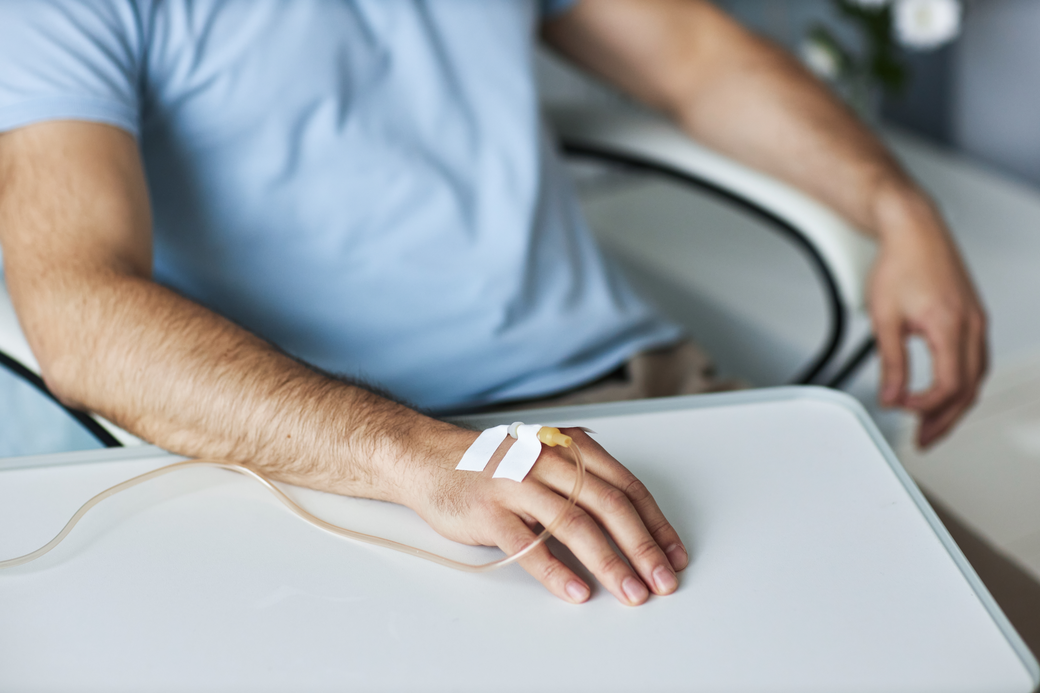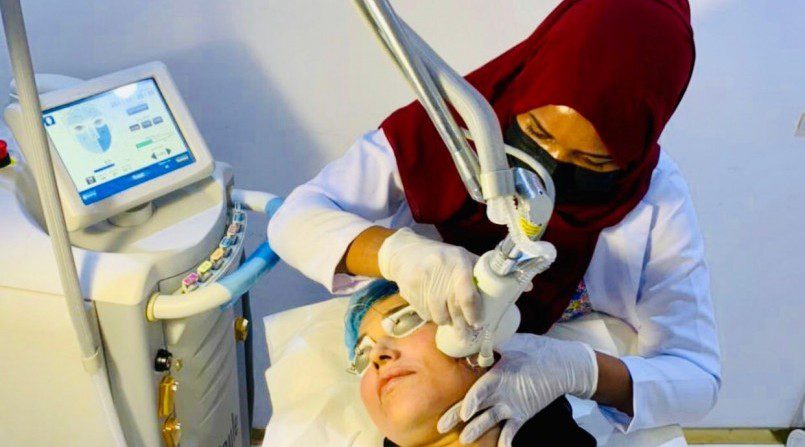Is an IV drip painful?

An IV drip itself shouldn't be painful if it's inserted properly by a trained medical professional. However, some people may experience mild discomfort during the insertion process, which involves a small needle puncturing the skin and entering a vein. The level of discomfort can vary depending on factors such as individual pain tolerance, the skill of the person inserting the IV, and the location of the insertion.
Once the IV is in place and the drip is running, most people don't experience pain. However, some may feel a slight sensation or pressure at the insertion site. If you experience significant pain, swelling, or other concerning symptoms at the IV site during or after the insertion, it's essential to notify the healthcare provider immediately as it could indicate complications such as infiltration or infection.
IV Tips for Patients for Managing IV Injection Pain:
Here are some tips for patients to manage IV injection pain:
- Communicate with your healthcare provider: If you're anxious or concerned about pain during the IV insertion, communicate this to your healthcare provider. They can provide reassurance and may offer techniques to minimize discomfort.
- Stay hydrated: Drinking plenty of water before the procedure can help plump up your veins, making them easier to find and insert the IV.
- Choose the right vein: Some veins are more accessible and less painful to access than others. If you've had successful IV insertions in the past, let your healthcare provider know, so they can try those veins first.
- Apply heat: Applying a warm compress or heating pad to the area where the IV will be inserted can help dilate the veins, making it easier to insert the needle and potentially reducing pain.
- Stay relaxed: Try to stay as calm and relaxed as possible during the procedure. Deep breathing exercises or other relaxation techniques can help reduce anxiety and discomfort.
- Numb the area: Some healthcare providers may use a topical numbing cream or spray to numb the skin before inserting the IV. If this option is available, consider asking for it.
- Ask for distraction: Listening to music, watching a video, or engaging in conversation with a healthcare provider or companion can help distract you from the sensation of the IV insertion.
- Keep the area still: Once the IV is inserted, try to keep the arm and the IV site as still as possible to prevent discomfort or irritation.
- Report any pain: If you experience significant pain during the IV insertion or while the IV is in place, don't hesitate to let your healthcare provider know. They can assess the situation and take steps to address any issues.
- Follow post-insertion care instructions: After the IV is inserted, follow any post-insertion care instructions provided by your healthcare provider to minimize discomfort and reduce the risk of complications.
Remember that while some discomfort during IV insertion is normal, significant pain should be addressed promptly by your healthcare provider. They can adjust the IV placement or provide additional interventions to help manage your pain.
For children who are nervous about IV injections.
We administer IV drips to those from the age of 18 years and above.
Reducing IV Drip Fears
Reducing fears associated with IV drips requires understanding and addressing their concerns in a supportive manner. Here are some strategies:
- Clear Explanation: Provide a detailed explanation of why the IV drip is necessary and what it will help achieve in their treatment. Clear communication about the procedure can alleviate uncertainty and fear.
- Answer Questions: Encourage the patient to ask questions about the IV drip procedure and address any concerns they may have. Providing accurate information can help dispel myths or misconceptions.
- Empathy and Understanding: Validate the individual's feelings of anxiety or fear about the IV drip. Acknowledge their emotions and offer reassurance that it's normal to feel apprehensive.
- Relaxation Techniques: Teach relaxation techniques such as deep breathing exercises or mindfulness meditation to help adults manage anxiety during the IV drip. These techniques can promote a sense of calm and control.
- Distraction Methods: Offer distractions during the IV drip procedure, such as listening to music, watching a movie, or engaging in conversation. Redirecting focus away from the IV can help reduce anxiety.
- Comfort Measures: Provide comfort measures such as adjusting the room temperature, offering blankets or pillows, and ensuring the IV insertion site is kept comfortable. Creating a soothing environment can ease anxiety.
- Choice and Control: Empower patients by involving them in decisions about their IV treatment whenever possible. Offer choices regarding the placement of the IV line or the type of fluids being administered, if appropriate.
- Topical Anesthetics: Consider using a topical numbing cream or spray on the insertion site to minimize discomfort during IV placement. This can help alleviate fear of pain associated with the procedure.
- Gradual Exposure: If the fear of IV drips is severe, consider a gradual exposure approach where the individual can gradually become more accustomed to the procedure over time. Start with smaller steps, such as visualizing the procedure, before progressing to actual IV placement.
- Follow-Up Support: Provide follow-up support after the IV drip procedure to address any lingering concerns or discomfort. Checking in with the individual and offering reassurance can help build trust and reduce fear for future treatments.
By implementing these strategies with empathy and patience, healthcare providers can help adults overcome their fears associated with IV drips and improve their overall treatment experience.
Pain after an IV drip around the wrist
Experiencing slight pain after an IV drip in the wrist is not uncommon and can be caused by various factors. Here are some possible reasons for pain after an IV insertion in the wrist and what you can do about it:
- Phlebitis: Phlebitis is inflammation of the vein, which can occur as a result of irritation from the IV catheter, or the fluids being administered. Symptoms include pain, redness, swelling, and warmth around the insertion site.
To treat Phlebitis, apply a warm compress to the affected area to reduce inflammation and discomfort. Over-the-counter pain relievers such as ibuprofen or acetaminophen may also help alleviate pain. If the symptoms worsen or persist, consult a healthcare professional for further evaluation and treatment.
- Infiltration: Infiltration happens when the IV fluid leaks into the surrounding tissues instead of entering the vein. This can cause swelling, pain, and tissue damage around the insertion site.
To treat Infiltration, elevate the affected arm to reduce swelling and promote fluid drainage. Apply a cold compress to reduce pain and inflammation. It's essential to notify the healthcare provider immediately if you suspect infiltration, as they may need to remove the IV and assess the extent of tissue damage.
- Nerve Injury: Sometimes, the IV catheter can inadvertently injure a nerve near the insertion site, leading to pain, numbness, or tingling sensations. If you experience persistent or severe pain, numbness, or tingling after an IV insertion, seek medical attention promptly. A healthcare professional can evaluate the nerve function and determine the appropriate course of action, which may include medication or referral to a specialist.
- Bruising: Bruising is common after an IV insertion, especially in the wrist area where the skin is thin and sensitive. It can cause discomfort and tenderness around the bruised area.
To treat bruising, apply a cold compress to the bruised area to reduce swelling and alleviate pain. Over-the-counter pain relievers may also help manage discomfort. Most bruises resolve on their own within a few days to a week. If the bruising is severe or accompanied by other concerning symptoms, consult a healthcare provider for further evaluation.
- Allergic Reaction: In rare cases, a person may experience an allergic reaction to the materials used in the IV catheter or the fluids being administered, leading to pain, redness, swelling, and itching at the insertion site.
If you suspect an allergic reaction, notify the healthcare provider immediately. They may need to remove the IV and administer appropriate treatment, such as antihistamines or corticosteroids, to alleviate symptoms.
If you experience severe or persistent pain after an IV insertion in the wrist, it's essential to seek medical attention promptly to determine the underlying cause and receive appropriate treatment. Avoiding further complications and ensuring proper healing is crucial for your health and well-being.
Conclusion
In conclusion, while the insertion of an IV drip may cause discomfort for some individuals, the procedure itself is typically not painful when performed correctly by trained healthcare professionals. The sensation experienced during IV insertion is often described as a brief pinch or sting, similar to a small needle prick. However, the discomfort is usually minimal and temporary.
Once the IV is in place, most people do not feel any pain from the drip itself. Instead, they may feel a cool sensation as the fluids or medications flow into their veins. However, if there is pain during the IV drip, it could indicate issues such as infiltration, phlebitis, or nerve injury, which should be addressed promptly by healthcare providers.
Overall, while discomfort during IV insertion is possible, the benefits of receiving necessary fluids, medications, or treatments via an IV typically outweigh any temporary discomfort. Proper technique, communication with healthcare providers, and the use of comfort measures can help minimize discomfort and ensure a positive experience for individuals receiving IV therapy.
FAQs IV Drip
During an IV drip infusion, a sterile catheter (a thin, flexible tube) is inserted into a vein, typically in the arm or hand. Here's what happens during the process:
- Preparation: The healthcare provider selects a suitable vein, often in the arm or hand, and cleans the area with an antiseptic solution to reduce the risk of infection.
- Insertion of the IV: Using a sterile needle attached to a catheter, the healthcare provider punctures the skin and inserts the catheter into the vein. Once the catheter is in place, the needle is removed, leaving only the catheter in the vein.
- Securing the IV: The healthcare provider secures the IV catheter in place using tape or a transparent dressing to prevent it from moving or becoming dislodged.
- Connection to IV tubing: The IV catheter is connected to IV tubing, which is attached to a bag or bottle containing the prescribed fluids, medications, or nutrients. The IV tubing may also include additional components such as a flow regulator, infusion pump, or drip chamber.
- Adjusting the flow rate: The healthcare provider adjusts the flow rate of the IV infusion based on the prescribed dosage and the patient's specific needs. The flow rate determines how quickly the fluids or medications will be delivered into the bloodstream.
- Monitoring: Throughout the IV drip infusion, the healthcare provider monitors the patient's vital signs, infusion site, and overall response to the treatment. This ensures that the IV therapy is administered safely and effectively.
- Completion: Once the prescribed amount of fluids, medications, or nutrients has been delivered, the IV drip infusion is completed. The healthcare provider disconnects the IV tubing from the catheter and removes the catheter from the vein.
- Post-infusion care: After the IV drip infusion, the healthcare provider may apply a bandage to the insertion site and provide instructions for post-infusion care, such as keeping the site clean and dry to prevent infection.
Overall, an IV drip infusion is a common medical procedure used to deliver fluids, medications, or nutrients directly into the bloodstream. It is performed by trained healthcare professionals in various clinical settings, including hospitals, clinics, and outpatient facilities.
Preparing for an IV drip involves several steps to ensure a smooth and successful procedure. Here's what you can do to prepare:
- Follow Pre-Procedure Instructions: If your healthcare provider has provided specific instructions to follow before the IV drip, make sure to adhere to them. This may include fasting for a certain period or avoiding certain medications.
- Stay Hydrated: Drinking plenty of water before your IV drip appointment can help hydrate your veins, making it easier for the healthcare provider to find a suitable vein for insertion.
- Eat a Light Meal: It's generally a good idea to eat a light meal before your appointment, especially if you need to fast for the procedure. However, avoid heavy or greasy foods that may cause discomfort during the IV drip.
- Wear Comfortable Clothing: Choose loose-fitting clothing with sleeves that can be easily rolled up, as the healthcare provider will need access to your arm or hand for IV insertion. This will also help you feel more comfortable during the procedure.
- Communicate Any Concerns: If you have any concerns or questions about the IV drip procedure, don't hesitate to communicate them with your healthcare provider beforehand. They can address your concerns and provide reassurance.
- Bring Entertainment: Depending on the duration of your IV drip infusion, you may want to bring along entertainment such as a book, music, or a tablet to keep yourself occupied during the procedure.
- Arrange Transportation: If you anticipate feeling lightheaded or weak after the IV drip, it's a good idea to arrange for someone to drive you home afterward, especially if you'll be receiving sedation or anesthesia during the procedure.
- Relaxation Techniques: Practice relaxation techniques such as deep breathing or visualization to help calm any nerves you may have about the procedure. Staying relaxed can make the experience more comfortable.
- Inform Healthcare Provider of Medical History: Make sure to inform your healthcare provider of any medical conditions, allergies, or medications you're currently taking. This information will help them tailor the IV drip treatment to your specific needs and minimize potential risks.
By following these preparation steps, you can help ensure a smooth and comfortable experience during your IV drip infusion. Remember to communicate with your healthcare provider if you have any questions or concerns before the procedure.
Most Popular:
-

Sciton HALO vs Sciton BBL
Read More »September 20, 2022 -

What is profhilo, and how is it different from fillers?
Read More »September 20, 2022 -

Body contour solutions from SKIN111
Read More »September 20, 2022 -

Does IV GLUTATHIONE therapy work
Read More »September 20, 2022 -

How can an IV drip help you boost your energy
Read More »September 20, 2022